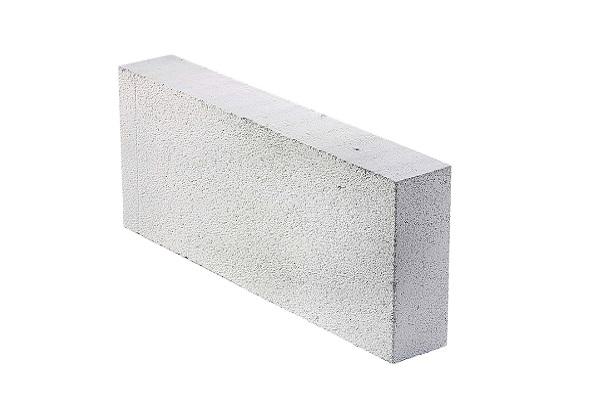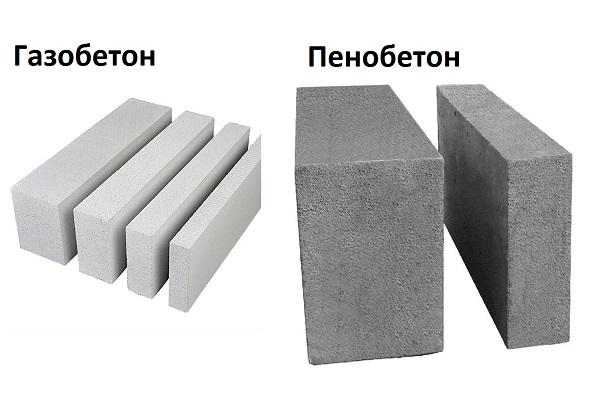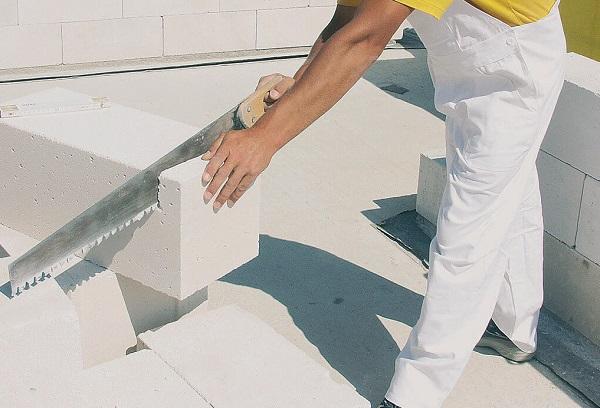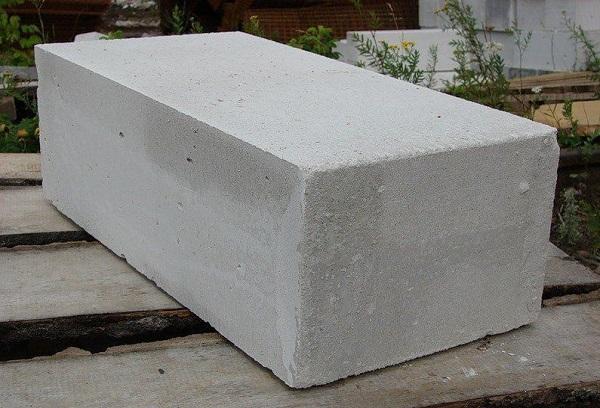Aerated concrete or foam concrete: which is more profitable and better suited for building a house, garage and bathhouse?
Content:
Before starting construction, you need to decide on the main type of materials. Many customers are wondering what is the difference between foam block and gas block, because both types of these building modules are types of cellular concrete.
Both foam block and aerated concrete are made by foaming concrete mixtures. Both types of materials are used for the construction of load-bearing walls, internal partitions, and additional thermal insulation. Despite this, they differ in a number of technical characteristics.
What is aerated concrete
Aerated concrete blocks are white modules in the form of rectangular parallelepipeds. They are made from gas-filled concrete mixture, which, in addition to M400 cement, includes quartz sand, slaked lime, aluminum powder, calcium chloride and water.
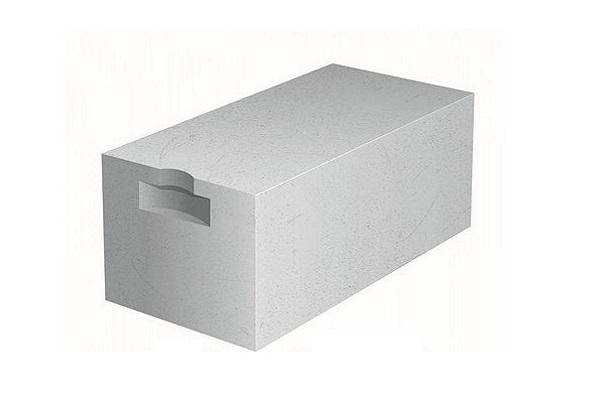
Production technology
Autoclave technology is used to produce the material:
- Quartz sand is crushed into smaller fractions.
- All components are dosed according to the technological map.
- Cement, lime and sand are poured into the container.
- Everything is mixed, after which a suspension of aluminum with hot water is introduced.
- The prepared mixture is poured into lithoforms.
Forms are filled out at 65-70% of their total volume. As a result of the chemical reaction of aluminum powder with lime, the release of gas is stimulated, due to which the material acquires its porous structure and the lithoform is filled to 100%.
Next, the hardened block is cut into modules of the required sizes, and the excess is recycled. The resulting modules are loaded into an autoclave and, due to steaming technology, acquire all the required characteristics.
Important! There is also a technology for producing aerated concrete without the use of an autoclave. However, the resulting building models are less durable.
Areas of use
Aerated concrete is in demand due to its density, wide range of applications, and ease of working with the material. According to the construction classification, the following types of material are distinguished:
- thermal insulation;
- structural and thermal insulation;
- structural.
Aerated concrete is used in construction for:
- construction of interior partitions and main walls;
- thermal insulation of brick and reinforced concrete buildings;
- construction of fencing (fences);
- production of monolithic type lintels for different types of openings.
Aerated concrete blocks are reliable and have a long service life. And this is only a small part of their advantages.
What is foam concrete
Foam concrete blocks are popular in the field of private housing construction. They are made from a mixture of Portland cement, river sand, foaming concentrate, aluminum powder, basalt fiber and warm water.
The total volume of air cavities in foam concrete affects the weight of the blocks, permissible load indicators and areas of application of the material.
Production technology
Foam concrete is produced using classical technology or the porous method.
In the first case, the cement-sand mixture is supplemented with a foaming agent, after which the solution is supplied through pipes to the construction site. The mixture hardens, simultaneously acquiring a characteristic porous structure.
The second method uses a porosizer. This special equipment allows you to conduct dry mixture elements directly into the foam concentrate stream. As a result, particles of the dry mixture settle on the surface of the air cells, and foam material is formed, which, as in the previous method, is supplied to the work site via a pressure line. The porous method is more often used in the field of industrial construction.
Classification
Foam concrete blocks compete very successfully with traditional brick, wood and reinforced concrete. Due to their thermal insulation properties, they provide comfortable living conditions in a house or apartment.
The following types of foam concrete are distinguished:
- Thermal insulation. Withstands loads up to 9 kg/cm². Does not crack, maintains integrity.
- Thermal insulation and structural. Maximum permissible load – 800 kg/m³.
- Structural. It has the maximum strength class – B12.
- Structurally porous. Maximum load – 1.6 t/m³.
Important! A high level of porosity increases the level of thermal insulation, while a low content of air cavities makes foam blocks stronger.
The structural type is used for the construction of boxes, internal walls, and interior partitions. Thermal insulation is used in construction:
- floors made of reinforced concrete;
- load-bearing structures in contact with low temperatures;
- under-roof space, due to which the main heat losses often occur.
The porosity concentration of thermal insulating foam concrete can reach 80% of the total volume, which allows it to significantly “reduce” its mass.
What is the difference?
Despite some similarities, the materials have a number of differences, due to which their areas of application in construction are significantly expanding. It is more appropriate to compare these types of building models in a tabular version.
| Criterion | Foam concrete | Aerated concrete |
| Color | Grey | White |
| Density | Low | Average |
| Thermal insulation | High | Average |
| Soundproofing | Average | good |
| Frost resistance | Average | High |
| Load limit | Low (not used for foundations) | Low (not used for foundations) |
| Flammability | Low | Low |
| Hygroscopicity | Average | High |
| Air conductivity | Average | High |
| Environmental friendliness | Average | Average |
| Price | Cheaper | Expensive |
| Application | Objects with low load | Objects with low load |
The difference is also demonstrated by the degree of shrinkage of the materials. For foam concrete modules it is 1-3 mm/m, while for aerated concrete this figure does not exceed 0.5 mm/m. Therefore, cracks in walls made of foam concrete are much more common than the same defects in aerated concrete structures.
Pros and cons of aerated concrete
Thanks to their cellular structure, aerated concrete slabs allow steam to pass through, which increases the thermal insulation properties of the material. In addition to thermal insulation, the material has many other advantages:
- light weight with fairly large dimensions;
- no need to use lifting equipment during the construction process;
- ease of installation of blocks;
- high speed of construction of structures using aerated concrete;
- moderate sound insulation;
- convenient block shape;
- environmental friendliness;
- fire resistance;
- ease of machining;
- frost resistance (2 times higher than that of foam concrete);
- long service life.
True, there was also the usual fly in the ointment:
- hygroscopic (permeable to water);
- low strength;
- the need to use special glue when laying;
- impossibility of fixing fastening hardware in aerated concrete.
Due to its hygroscopicity, this material requires additional waterproofing. The safety margin is enough for no more than 3 floors.
Pros and cons of foam concrete
As for foam concrete, it also has its pros and cons.
The first include:
- good thermal insulation (2 times warmer than brick);
- wide scope of application;
- resistance to temperature changes;
- porosity and breathability;
- lower density and weight of blocks (lighter than aerated concrete);
- low price (20% cheaper than aerated concrete).
By reducing the mass of foam concrete, its transportation is greatly facilitated. Just like with aerated concrete, foam concrete blocks can be used for the construction of buildings no more than 9 meters high. This type of material is considered safe from the point of view of human health, however, when it comes to environmental friendliness, it is inferior to aerated concrete.
Another advantage of foam concrete modules is that they can be manufactured directly on construction sites. Moreover, the simple technology of their production has a positive effect on the cost of the product.
Despite the large number of advantages, the disadvantages of this material cannot be ignored:
- high hygroscopicity, requiring additional waterproofing;
- small maximum loads compared to brick or reinforced concrete;
- weak shockproof characteristics;
- low strength;
- Difficulties using fastening systems.
Despite all the shortcomings, foam concrete is actively used in construction, primarily because of its low price.
What is better to choose
When choosing blocks made of cellular concrete, you need to pay attention to the appearance: correct geometry, shade, weight, absence of visible defects. The brand of the manufacturer should also be taken into account.
When choosing foam concrete or aerated concrete, you also need to clearly understand for the construction of which objects these materials will be used. Thus, aerated concrete blocks, due to their frost resistance, are suitable both for the construction of residential premises and for the construction of garages, workshops, and warehouses. This material is popular primarily due to its long service life and reliability. Although it is inferior in strength to the usual brick, from an economic point of view it is much more profitable.
In rare cases, aerated concrete is used to build a bathhouse. The unpopularity of aerated concrete modules is due to their increased hygroscopicity, so builders will have to take care of additional waterproofing.
Important! For the construction of baths, only aerated concrete made using autoclave technology is used.
You can also build a house from foam concrete. At the same time, comparing whether a gas block or a foam block is cheaper, we can confidently say that it is the latter.Unlike aerated concrete, housing construction using foam blocks will cost at least 20% less. Foam concrete blocks are often used as additional thermal insulation of structures. It is their high porosity that helps retain heat in the room.
It is impossible to say for sure which is better for building a house: foam concrete and aerated concrete. You need to choose the type of building blocks based on many factors, including the location of the site, architectural features and climatic conditions of the region.
